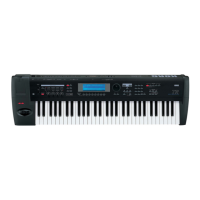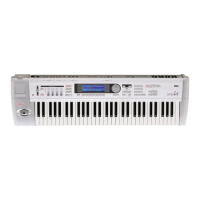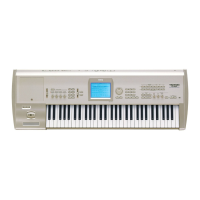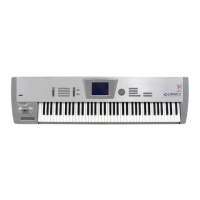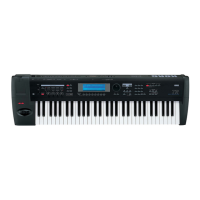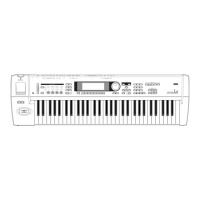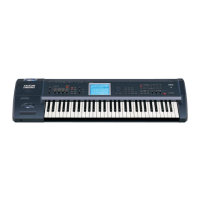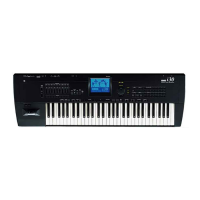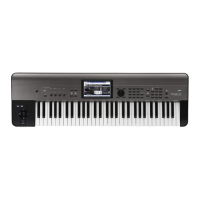
Do you have a question about the Korg T1 and is the answer not in the manual?
| Polyphony | 16 voices |
|---|---|
| Sound Generation | AI Synthesis System |
| Display | LCD |
| Multitimbral | 8 parts |
| MIDI | In, Out, Thru |
| Year Released | 1989 |
| Effects | Chorus, Delay, Reverb |
| Memory | 100 Combinations |
| Outputs | Headphones |
| Keyboard | 88 keys (Weighted) |
| ROM | 4MB |
Avoid using the unit in environments with extreme conditions like direct sunlight or high humidity.
Use only the rated AC voltage and avoid noisy outlets.
This unit may cause interference with nearby radio or TV receivers.
Avoid excessive force when operating keys and knobs to prevent damage.
Do not turn power off or subject the unit to shocks while a disk is inserted.
Clean the exterior with a soft, dry cloth only. Avoid solvents.
Keep the manual handy for reference due to the unit's many functions.
Guide on how to read the manual for effective learning and understanding.
Unit has a battery to preserve memory; contact dealer if 'Battery Low' appears.
Explains the two formats of T1/T2/T3 disks: Program/Sequence and PCM disks.
Details the types of M1/M1R cards compatible with the T1/T2/T3.
Information on PCM RAM capacity, optional RAM, and compatibility with other systems.
Instructions on how to properly insert a floppy disk into the drive.
Warnings about removing disks or powering off while the drive is busy.
Procedure for safely ejecting and removing a floppy disk from the drive.
Importance and procedure for cleaning disk drive heads to prevent errors.
Advice on avoiding environmental factors and magnetic fields that can damage disks.
Explanation of the write protect tab's function to prevent accidental data erasure.
Recommendation to keep copies of important data on another disk for safety.
Instructions on formatting new or previously used disks before data storage.
Steps and explanation for creating a new sound (Program) by editing parameters.
Procedure for formatting a disk and saving internal data to it as a backup.
Steps to select and prepare a program for editing, including mode selection.
Explains serial and parallel effect placement methods for combinations.
How to select and edit individual effects for programs and combinations.
Outlines the steps and methods for creating a song using the sequencer.
Step-by-step guide to recording tracks and playback in realtime using the sequencer.
Explains step recording technique for inputting notes and chords one by one.
How to adjust the volume balance of tracks after listening to playback.
Procedure to format a disk before saving data using the DISK/CARD mode.
Instructions on how to save data to a specified file on a disk.
